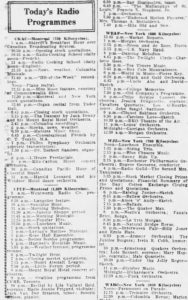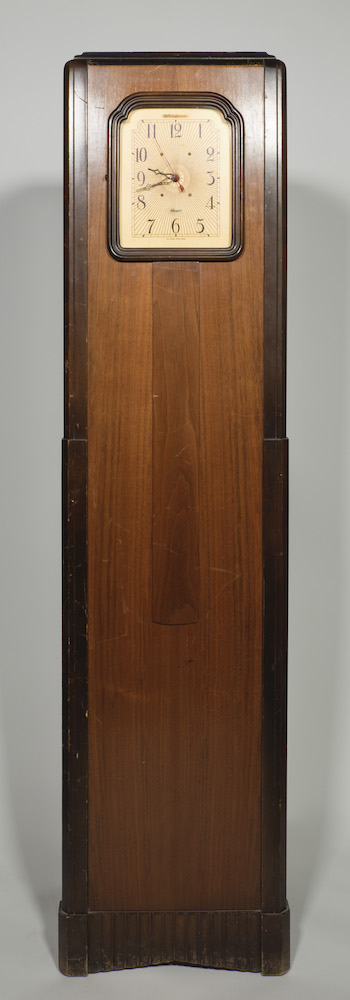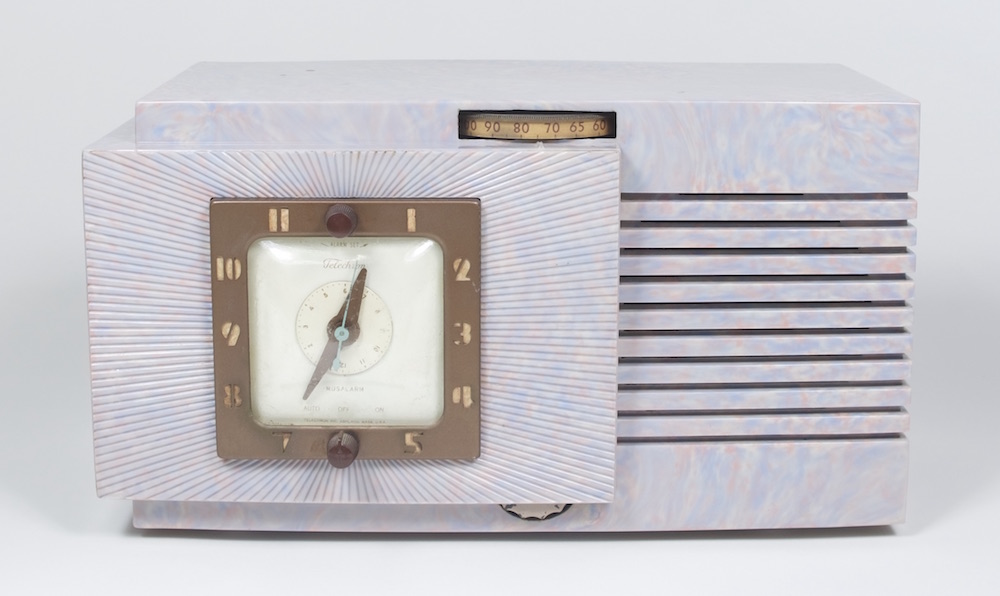Radio Time
The radio’s entry into homes in Canada changed not only the sound of home interiors but also the rhythms of daily life. Radio helped to standardize time through scheduled programming, including the news. Canadian radio stations had broadcast news since 1922. News broadcasts were particularly important for farmers on the Canadian Prairies. Farmers came in from the fields to listen to the Market Reports announced along with the news. This way they knew when to bring their wheat to the grain elevators in the West. The daily broadcast of the National Research Council of Canada’s time signal from Ottawa also standardized time over the radio. The Canadian Broadcasting Corporation brought this service into homes beginning in 1939.
As broadcast radio became regulated in the 1920s and 1930s, local stations aired programs at set hours during the day and week. It took some time for programs to find their time and place in the daily schedule. Initially, network broadcasting in Canada and the United States occurred at the same time, not accounting for time zones. Comedy shows broadcast in the evening in New York were heard in the late afternoon on the west coast. The soap operas that many associated with housewives did not settle firmly into the afternoon until 1936. These shows started airing in the evenings and gradually migrated to the afternoon schedule. Canadians listened to programs like Amos ’n’ Andy, explaining that they had never heard voices like that before. Reportedly, toilets stopped flushing in the United States for fifteen minutes while Pepsodent’s Amos ’n’ Andy was on the air. Slowly, Canadians adapted their days to the radio program schedule. They listened to both Canadian and American programs. Programs were in English and French, produced locally, regionally, nationally, and internationally. The programs structured listeners’ days with information and entertainment.
Listen to the audio clip with transcript: “Un homme et son péché, 1948”
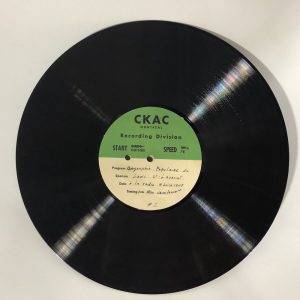
“Biographie Populaire de” by Jean Penverne, program sponsored by Louis St. Laurent, 9 June 1949. Musée des ondes Emile Berliner.
With advancements in recording technology, stations began recording programs on large discs. This allowed the stations to replay programs on air. The Musée des ondes Emile-Berliner holds examples of these transcription discs. Click on the picture of the disc to play a brief excerpt from “Biographie Populaire de Louis Saint-Laurent” from 1949.
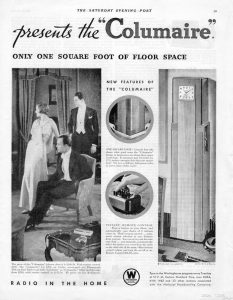
“The ‘Columaire’: Only One Square Foot of Floor Space,” The Saturday Evening Post: pp 59. Musée des ondes Emile Berliner.
Radio programs encouraged people to tune in at the right moment. The design of receivers sometimes referred directly to time. A distinctive, early example is the Westinghouse “Columaire” (1931). Famous New York designer Raymond Loewy created this receiver. Westinghouse manufactured it for the Canadian market in Montreal. The model merges a grandfather clock with radio receiver. Its form alludes also to a contemporary, tapering skyscraper. This was truly “state-of-the-art” modern!
Increasingly in the postwar period, small and fashionably colourful clock radios (such as the Canadian General Electric Model 8H67) found their way onto Canadian bedside tables. Radio now reached listeners from morning to night.


